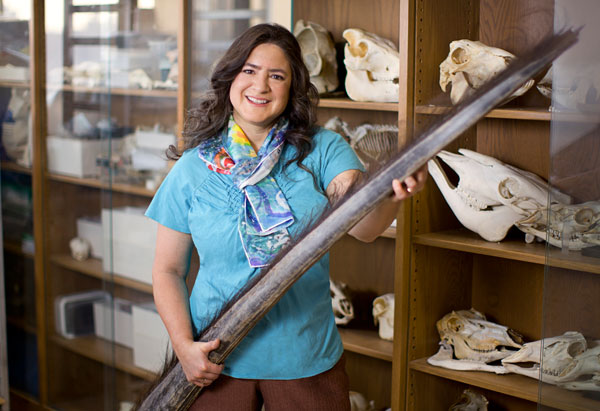Inside the World of Anatomist Joy Reidenberg

Photo: Olivia Barr
Anatomist Joy Reidenberg, PhD, delights in dissecting the biggest beasts on Earth.
When Joy Reidenberg was growing up in Connecticut, her idea of fun was to "poke around in roadkill." She took her father fishing, then happily gutted the catch—not to eat, but to examine the "pretty fringes" on the fishes' gills. Now a professor of anatomy at Mount Sinai School of Medicine in Manhattan, Reidenberg, 50, has dissected Burmese pythons, a hippo, a giraffe, and hundreds of marine mammals (all dead from natural causes, encounters with boats or nets, or euthanasia). Lately, she's been dissecting dolphin lungs to understand how they adapt to pressure changes (which might offer clues to treatments for emphysema) and researching surgical remedies for acid reflux by looking at the digestive systems of cows and deer.
"It baffles me that seeing blood and guts makes people nauseous," says Reidenberg, whose work sometimes requires her to plunge knives into stinking, decomposed blubber. "In our primitive state, that's what we'd be eating." More shocking to her are the signs of environmental distress she confronts every day: endangered blue whales dragged into harbors by freighters, a rare pygmy sperm whale with a plastic bag blocking her intestinal tract. "No one used to care about these disasters," she says. "Now we read about them in the paper. Which means there will be more pressure to improve how we treat our oceans—and limit oceanic roadkill.
Turning Your Unique Passion into a Career



